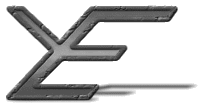The middle interface defines the access that the user interface has to the underlying system. The reason for having a middle interface is to allow the user and server interfaces to be as decoupled as possible, allowing either or both the user and server interfaces to be changed, or replaced. This means that the user interface has no knowledge (and no need for knowledge) of the server interface, where, or how the files are being stored. Also the server interface has no knowledge (and no need for knowledge) of the user interface, where or how the files are being displayed and edited.
This split allows the engine to be used to store any type of document (web page, word processed document, etc), in any kind of storage system (the normal file system, a database, another web site, etc), using any kind of display, or user, interface (web site, command line, word processor). This means that the engine can be used for much more than the storage of web pages, and can in fact be used for all manner of documents that require co-operative authoring, content management and collaboration to work on, which includes versioning. Because of the design of this engine, both user and server interfaces can be written to seamlessly integrate the benefits of co-operative authoring, content management and collaboration into legacy applications that may not fully support content management at present, such as web sites.
The middle interface specifies the actions that are available to the user interface to manipulate documents, for example loading and saving, version and author information. While the middle interface provides a selection of methods to the user interface to manipulate documents, it requires certain methods to be present in the server interface to provide the functionality to complete the user interface's requests. Not all methods that the middle interface supports need to be present in the server interface, as some of the methods provided are supplied in the middle interface, using other lower-level methods in the server interface.
| Previous: | 4.09 UI: Edit servlet |
| Next: | 4.11 Server interface |
